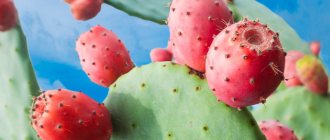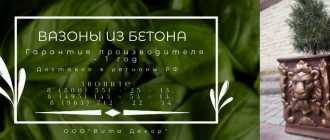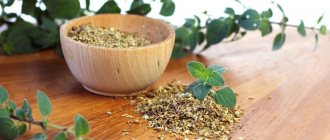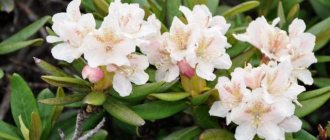Opuntia fig is a perennial cactus native to the Mediterranean countries. Its homeland is considered to be Mexico, and the name comes from the Greek city of Opus, where it became widespread. Now prickly pear can be found in Asian countries, in Italy, Greece, Crimea, Tunisia, Ethiopia, Madagascar, Israel, the Philippines and France under different names - tsiber, fig, Indian prickly pear, prickly pear, nopala.
The prickly pear cactus, thanks to its medicinal properties, is widely used in both folk and traditional medicine, industry and cosmetology. Its juicy fruits with an unusual taste are eaten fresh, boiled, fried, and prepared into jams and drinks.
What it looks like and where it grows
Opuntia is a plant from the Cactus family, represented by several hundred varieties. It has dense oval stems with flattening, which branch abundantly and stretch up to 4 m above the ground. In good conditions, an adult cactus is a full-fledged shrub. The shoots of prickly pear are also its fleshy oblong leaves.
The plant is densely covered with buds with groups of spines and soft glochidia, blooms with yellow, orange and red single buds. Some of them subsequently produce fragrant, juicy fruits with flat seeds inside.
The berries of the prickly pear cactus taste like strawberries, kiwi or pineapple.
The culture is widespread in its natural form in Mexico, the West Indies, and North and South America. It is found in the tropics and subtropics around the world as an imported plant. In Russia you can see cacti in Crimea.
Diseases and pests
Like any other cactus, Opuntia is also susceptible to various diseases and pest attacks. But before we start talking about diseases and pests, it is worth noting that most diseases appear with the help of the owners themselves.
This is all due to improper care, too frequent or, on the contrary, insufficient watering, lack of fertilizing or replanting, and much more. Although the cactus is an unpretentious plant, it still needs to be cared for properly.
The most common pests of Prickly Pear are nematodes, mealybugs, aphids and spider mites.
Let's look at how you can deal with them and how to detect them.
Nematodes
Basically, nematodes attack the roots, so they can only be noticed when replanting the plant, and even then not always. The roots should be carefully and thoroughly examined, and if you notice compactions or something like a growth on them, these are nematodes. It is easy to deal with them; to do this, damaged roots are cut off slightly above the growths, and after that, the root system should be placed in hot water (50-55 degrees) for 10-15 minutes.
Next, the roots should be dried and planted in new soil.
Mealybug
Mealybugs are easy to detect - they are white and leave behind a white coating. To get rid of it, use alcohol to remove all traces of it and treat the pest itself. It is important that not a trace of the raid should remain.
Then, spray the cactus with soapy water and leave it for 10 minutes, and then rinse everything off with warm water. If there are too many insects, then use a special preparation.
Spider mites and aphids
These pests also need to be dealt with immediately. To do this, the plant should be sprayed with a special preparation in two stages. The break between stages should be from 7 to 10 days, no more.
If we talk about diseases, Opuntia is susceptible to diseases of various fungi and rot.
Basically, the appearance of fungi is associated with frequent watering and incorrectly selected fertilizers, namely with an increased nitrogen content. If suddenly you notice the appearance of brown or brown spots, lethargy of the stems, their bending or rotting small areas - this is all due to the appearance of rot and oversaturation with nitrogen.
To combat these diseases, as a rule, damaged areas of the stems are cut off, sprinkled with ash, and then treated with a special preparation. Also, for greater efficiency, especially if the plant is oversaturated with moisture, the cactus is transplanted into a new pot with new soil, and the first watering is carried out no earlier than 3-4 days later.
But there is one disease from which the plant cannot be saved - dry rot. It so happens that the first symptoms of the disease appear too late, when the plant is already beginning to slowly dry out. The only thing that can be done is to propagate the cactus using cuttings, so as not to lose it altogether.
Chemical composition
Photos and medicinal properties of the prickly pear cactus are of interest to traditional medicine due to the rich composition of the plant. The shoots and fruits contain:
- protein compounds;
- vitamins B2, B3, B6 and B9;
- ascorbic acid;
- calcium, sodium and selenium;
- beta-carotene;
- leucine and lysine;
- vitamin A;
- zinc, copper, potassium and magnesium;
- threonine and isoleucine;
- fatty acid;
- phosphorus and zinc;
- tryptophan.
Products based on tropical cactus have a pronounced strengthening effect on the body.
Description of the plant
The nutritional value of prickly pear lies in the content (per 100 g): proteins (0.73 g), fats (0.51 g) and carbohydrates (9.57 g). The energy value of the fruit is 41 kcal.
The beneficial properties of prickly pear fruits are due to the vitamins and minerals they contain:
- Vitamin C – 14 mg;
- B vitamins – B2 (0.1 mg), B3 (0.5 mg), B6 (0.1 mg), B9 (6 μg);
- Beta-carotene – 25 mcg;
- Vitamin A – 2 mcg.
In order to get the maximum benefit from consuming figs, you need to remember that vitamin A and beta-carotene are fat-soluble, so you need to eat the fruit with foods rich in fat.
The beneficial properties of prickly pear are explained by the high content of macro- and microelements necessary for the normal functioning of the body. 100 g of plant contains:
- calcium – 56 mg; iron – 0.3 mg; magnesium – 85 mg;
- phosphorus – 24 mg; potassium – 220 mg; sodium – 5 mg;
- zinc – 0.1 mg; copper – 0.1 mg; selenium – 0.6 mcg.
Calcium and phosphorus contained in fruits support healthy bones, teeth, nails and hair, and ensure muscle growth. Potassium and magnesium are very beneficial for the heart and blood vessels, they are involved in maintaining water-salt balance and metabolic processes in the body. Includes amino acids: threonine (0.034 g), methionine (0.013 g), tryptophan (0.012 g), isoleucine (0.042 g), leucine (0.066 g), lysine (0.051 g).
What are the benefits of prickly pear?
The prickly pear cactus is valued not only for its decorative properties. Medicines are prepared on its basis. In particular, the plant:
- relieves inflammation in diseases of the genitourinary system;
- relieves joint pain and eliminates bruises after injuries;
- improves the functioning of the cardiovascular system;
- helps with gastritis and stomach ulcers;
- improves metabolic processes and accelerates digestion;
- stops bleeding and disinfects wounds and cuts;
- equalizes glucose levels in diabetes;
- has a fixing effect on diarrhea;
- promotes weight loss and removes waste and toxins from the body;
- helps with headaches;
- improves the condition of skin and hair.
Remedies based on prickly pear cactus are used for adenoma and prostatitis in men. The plant can be used for colds and to treat pneumonia.
Prickly pear reduces the likelihood of developing cancer due to the content of antioxidants and flavonoids
What are the benefits of prickly pear fruits?
The edible berries of the prickly pear cactus are valued in traditional medicine for their healing qualities. You can use them:
- for kidney problems and swelling;
- with cystitis;
- for asthma and pneumonia;
- for inflammatory liver diseases;
- for diarrhea and bleeding;
- for diseases of the spleen;
- with varicose veins and thrombophlebitis;
- with high cholesterol and atherosclerosis;
- for intestinal infections.
Prickly pear fruits contain a large amount of vitamins and organic acids. Due to this, they can be used for anemia and as a prevention of scurvy.
Beneficial properties of prickly pear cactus oil
Prickly pear oil has valuable medicinal properties; it is used in cosmetology and medicine. The product is prepared from the seeds of the plant, and only about 1 liter of pomace is obtained from 10,000 grains. This is due to its high cost. Cactus oil has a bright yellow or greenish color and a pleasant herbaceous odor.
The product is used to smooth the skin and eliminate fine wrinkles, strengthen hair and treat dandruff. Cactus oil helps with sunburn and promotes the regeneration of damaged epidermis. It is used in aromatherapy for relaxation and added to soothing baths for stress and sleep problems.
Attention! Cheaper prickly pear squeeze is made by infusing the leaves and fruits in an oil base. But the healing properties of such a product are much lower.
Cactus jam: beneficial properties
The sweetness of prickly pear fruits makes them a wonderful raw material for making preserves, jams and fillings for various desserts.
In addition to the above-mentioned positive reactions of the body to the consumption of cactus fruits, sweet infusions from succulents have a number of advantages:
- activate mental activity;
- improve memory;
- stimulate blood flow to the brain;
- have a positive effect on metabolism;
- They help you lose weight because they prevent the absorption of fat.
Not only prickly pear jam is useful: the seeds are processed into flour and oil, therapeutic tea is made from the flowers, and the stems are used in decoctions recommended for people with prostate dysfunction.
Methods of preparation and use
In folk medicine, water, oil and alcohol products based on beneficial tropical cactus are used. Some of them can be bought in specialized stores, others are suitable for making yourself from fresh raw materials.
Prickly pear tincture
Tincture of prickly pear cactus with vodka has pronounced warming, strengthening and anti-cold properties. It is prepared according to this recipe:
- Grind 100 g of plant leaves, previously cleared of thorns.
- Pour 500 ml of vodka into a glass container.
- Shake well and put in a dark place for 18 days.
- After the expiration date, filter.
We recommend reading: White cinquefoil: use of tincture, how to prepare, reviews
Use the product in small portions of 15 drops three times a day for colds and inflammation.
Prickly pear fruit tincture is suitable for rubbing for rheumatism and arthritis
Prickly pear oil
Cactus oil is usually not prepared at home; it must be purchased in specialized stores. Industrially, the product is obtained by cold pressing from seeds.
Prickly pear oil contains large amounts of vitamins E and K, linoleic acid and phytosterols. It is used mainly externally - for facial skin care, with premature aging of the epidermis, to eliminate the consequences of sunburn.
Prickly pear cactus seed oil stimulates collagen synthesis in skin cells
Growing and storing plants
You can grow figs both indoors and in the ground, provided there are infrequent frosts of at least -10 degrees. When growing outdoors, choose sunny, open areas. It takes root well in slightly acidic soils with the addition of pebbles, sand or expanded clay.
It requires watering, but by the end of summer it should be less abundant, but with the addition of complex fertilizers twice a month. By autumn, feeding is stopped because the plant stops its growth. For the winter, the cactus is covered with pine needles or dead wood. Propagated by cuttings, which are rooted at any time of the year at above-zero temperatures.
Now that you are more familiar with the prickly pear fig, you may want to grow it at home. We hope that our article will allow you to make full use of all its properties in maintaining health. And if a cactus already occupies a worthy place on your windowsill or plot, we will be grateful if you share with our readers the secrets of growing it and using this amazing plant.
Use in folk medicine
For medicinal purposes, you can use prickly pear tincture, healthy cactus juice and decoctions based on it. Traditional medicine recommends taking medications for a wide range of ailments, to strengthen the immune system and for vitamin deficiency.
For rheumatism
For joint diseases, a strong tincture of prickly pear is especially beneficial. They do it like this:
- Green cactus stems are cleared of needles and crushed in a volume of 200 g.
- Pour 500 ml of high-quality vodka into a dark glass vessel.
- Place it in the dark and cool for two weeks.
- Remove regularly to shake.
The finished strained product is taken 15-20 drops for acute inflammation and pain. You can also use a paste of prickly pear leaves for compresses; it will help relieve swelling and restore mobility to the joints.
With weakened immunity
To strengthen the immune system, traditional medicine recommends preparing a tincture of prickly pear flowers. The recipe looks like this:
- Large buds in the amount of 4-5 pieces are mixed with partitions from three walnuts.
- Pour the components into 500 ml of good vodka and shake.
- Place the tincture in a dark place for a week.
- Strain through cheesecloth to remove sediment.
You need to take the drug 30 ml on an empty stomach. In total, treatment is continued for no more than ten days, after which a mandatory break is taken.
For pneumonia
The prickly pear cactus fights bacterial processes in the lungs and promotes coughing during pneumonia. The following decoction is recommended for use:
- Several fleshy stems of the plant are crushed to obtain 50 g of pulp.
- Pour the raw material with cold water in a volume of 100 ml.
- Bring to a boil on the stove and cook for another half hour.
- Cool and filter.
You need to take a small spoon of cactus decoction three times a day in between meals.
A decoction of prickly pear cactus helps relieve fever and fever during pneumonia.
For ARVI
To quickly cure a cold, traditional medicine advises preparing a medicinal mixture. They do it like this:
- Several prickly pear blades are crushed and mixed with two large spoons of linden flowers.
- Steam the raw material with 200 ml of hot water.
- Leave covered for 14 hours.
The finished collection is filtered and consumed three times a day after meals. A single dosage should be half a glass.
For asthma
Treatment with prickly pear is beneficial for bronchial asthma - the plant reduces the frequency of attacks. The tincture for therapy is prepared as follows:
- Mix 200 g of finely chopped green blades with 500 g of honey.
- Add 500 ml of high-quality Cahors.
- In a closed container, put away for 20 days in a darkened cupboard.
- Strain.
You need to take 15 ml of the tincture three times a day before meals. In total, treatment is recommended to be carried out no longer than ten days in a row.
For diabetes
Prickly pear cactus balances blood sugar levels and improves metabolic processes in diabetes. The plant is used as follows:
- Healthy green blades are cut off and washed to remove dirt.
- Remove all thorns.
- Grind the raw materials in a blender to a pulp.
The resulting mass should be taken three times a day before meals, 30 g, with a small amount of water.
Prickly pear cactus reduces cholesterol levels and prevents the development of atherosclerosis
For intestinal upset
Prickly pear helps relieve intestinal pain, normalizes peristalsis and improves the absorption of valuable substances. For medicinal purposes, it is recommended to take the following tincture:
- The green pulp of the cactus is ground in a meat grinder or blender.
- Half a glass of gruel is mixed with a glass of sugar.
- Place the mass in a dark place for three days.
- Add 250 ml of fortified red wine to the mixture and stir.
- Leave to infuse for another day.
The finished drink must be passed through folded gauze. Drink the tincture on an empty stomach, 15 m twice a day, in total you can use it for a month in a row.
When coughing
Prickly pear cactus helps remove phlegm and makes dry cold cough more productive. The following remedy is prepared for treatment:
- The cactus blades are crushed and 10 ml of juice is squeezed out.
- Mix with 10 ml of medicinal marshmallow infusion.
- Add 10 g of liquid honey and bring the mixture until smooth.
We recommend reading: Medicinal properties of lure and contraindications
You need to take herbal medicine based on prickly pear three times a day after meals, two large spoons. Before use, it is allowed to warm it up a little, but only until warm.
For cystitis
A decoction of prickly pear roots works well against inflammatory processes in the urinary tract. It is done according to the following algorithm:
- Medicinal raw materials are crushed using a blender or meat grinder and the juice is squeezed out.
- Add 50 ml of water to the remaining cake.
- Pass it through gauze again.
The finished mixture is consumed 30 ml three times a day on an empty stomach.
It is allowed to eat the infusion of prickly pear juice with honey, but it is not advisable to use sugar
For gastritis
The properties of prickly pear speed up digestion and are beneficial for gastritis with slow production of hydrochloric acid. Traditional medicine recommends this recipe:
- The green stems of the plant are cut into the volume of three large spoons.
- Place in a thermos and add chopped tangerine peel.
- Pour in 500 ml of hot milk.
- Leave to infuse for 14 hours.
The strained drink should be consumed three times a day, 125 ml each.
For prostatitis
A decoction of prickly pear cactus relieves pain and inflammation due to prostatitis. During the period of exacerbation of the disease, it is recommended to use the following remedy:
- Prickly pear blades are finely chopped or crushed in a blender.
- Measure out 50 g of gruel and pour in 100 ml of cool water.
- Boil and then simmer over low heat for 25 minutes.
- Cool under the lid and filter.
The decoction should be taken three times a day, 50 ml on a full stomach. Therapy is carried out for a month, then take a break for three weeks and, if necessary, repeat the course.
Features of care
As already mentioned, prickly pear has an undemanding and harsh character. But there are features of caring for this cactus.
Watering and fertilizing
In spring and summer, prickly pear needs to be watered regularly and abundantly. This should be done carefully; water should not get on the plant stem. Pour it into the tray or onto the edge of the pot. When it gets very hot, water your prickly pear in the morning or evening hours.
In winter, during the dormant period, young plants are watered moderately, adults are transferred to dry mode. Watering is reduced and stopped completely. But it is necessary to keep the soil condition under control. The prickly pear may ask for water. The signal will be subsidence of the soil or worsening of the topography of the stem. Then lightly moisten the substrate.
In order for the cactus to absorb water well, the room temperature must be above +12 degrees.
To water prickly pear, use settled water at room temperature. When increasing watering in the spring, slightly acidify the water. For seven liters of water, add half a tablespoon of citric acid.
During the period of active growth, in spring and summer, prickly pear should be fed every month. Ready-made fertilizers for cacti with low nitrogen levels are suitable. An excess of this mineral causes root rot. During the dormant period, there is no need to fertilize the prickly pear.
Cactus blossom
It is no secret that prickly plants are bred not so much for their exotic greenery, but for the hope of seeing flowers. But why don't flowers always appear?
- The first reason is that your thorn does not have enough light. In winter, daylight hours are short and it is often cloudy. And prickly pear suffers from sun deficiency. To help you and your cactus - fluorescent lamps.
- Another reason for not flowering is temperature. The ideal temperature for prickly pear in winter is 13–15 degrees. By playing on the difference in temperature during the dormant and growing seasons, you can make the prickly pear bloom. As the weather gets warmer, increase watering and apply fertilizer.
Prickly pear blooms most readily in middle age, when it is three or four years old.
- Finally, another little trick of cactus growers. The pot for prickly pear should be too small . When the roots are crowded, young growth and flower buds appear. Just keep in mind that cacti do not tolerate moving during the growing season. You can rotate cacti when the plants have just begun to grow and there are no buds on them yet. Flower buds are laid on the shady side, and babies are formed on the sunny side. If you turn the other side of the prickly pear to the light, the buds may degenerate into babies, then you will not get flowers.
It is much easier to get miniature prickly pear species to bloom. Tall plants bloom less readily and their inflorescences are not as spectacular.
How to form a beautiful bush
When the prickly pear has finished blooming, you can take care of its shape. Cactus segments are removed to reap the beautiful bush. Moreover, it is better not to cut them, but to pinch them off by hand.
It is very difficult to obtain prickly pear fruits when kept at home. But, if your cactus not only blooms, but also bears fruit, do not rush to eat prickly “pears”. Most likely, you fed the plant. And complex fertilizers for cacti may contain chemical components harmful to humans.
You can remove stems that are too elongated at the beginning of awakening, around March. The right time for prickly pear to form is after flowering, just before the dormant period.
Application in cosmetology
The valuable properties of the prickly pear cactus are often used for skin care. The easiest way is to add a few drops of cosmetic oil from the seeds of the plant to regular creams and masks. It is also allowed to apply the product to the skin in its pure form, gently rubbing until completely absorbed. It is important to ensure that the squeeze does not get into your eyes, as this can cause irritation.
Prickly pear oil is also used:
- for the care of weakened hair - the product helps eliminate dandruff and stimulates the growth of curls when rubbed into the area at the roots;
- to restore split ends - simply rub the oil in your hands and apply it to damaged strands;
- for massage - prickly pear is used as an independent preparation or mixed with basic and essential extracts;
- for an even tan - the product is applied to the skin after exposure to the sun to prevent redness and provide a beautiful shade of the epidermis.
You can add prickly pear cactus oil to soothing and healing baths. Usually, only 10-15 drops are enough per filled container.
Infusions of prickly pear blades are suitable for daily washing for problem skin
Advice! When preparing baths, combining prickly pear oil with milk, cream and honey is especially beneficial; this mixture relaxes the nervous system and improves skin condition.
Euphorbia triangular cactus: beneficial properties
It is known that in ancient times, triangular euphorbia was used to combat lichens, warts and calluses. The ground root of this succulent treated snake bites.
Cactus effectively purifies the air, destroying harmful bacteria.
This concludes the list of beneficial qualities of triangular milkweed. It does not affect electromagnetic radiation like other types of cacti, but it produces poisonous juice that causes an allergic reaction.
You should not place the plant in the bedroom. And in general, you need to be careful with him.
Contraindications to the use of prickly pear cactus
The benefits and harms of prickly pear are not always clear. In some cases, the use of cactus-based products is not recommended. Contraindications include:
- individual intolerance;
- chronic kidney disease;
- large stones in the bladder;
- pregnancy and breastfeeding.
Tropical prickly pear juice can cause migraines, skin rashes and nausea. For the first time, cactus remedies are tried in small dosages and only if there are no side effects, full treatment is started.
Contraindications
Like any remedy that has an active effect on the body, prickly pear has its contraindications. Before use, you should objectively assess your health status, since the leaves, flowers and fruits of prickly pear fig can bring not only benefits, but also harm.
Due to the diuretic effect of products containing prickly pear, it is recommended to be careful when using it as a treatment for people suffering from chronic and acute diseases of the urinary system and kidneys.
You should also take into account individual intolerance to cactus components. They can cause allergies with symptoms such as:
- nausea;
- rashes on the body;
- headaches.
Collection and preparation
It is recommended to collect for medicinal use young stems and leaves of tropical cactus, reaching the size of a human palm. The skin of the blades should be green and shiny, no more than 1 cm in thickness. When cutting leaves, you need to wear thick gloves so that the plant’s spines do not leave scratches on the skin.
Fresh stems are usually used for medicinal purposes, but if desired, the raw materials can be placed in the refrigerator for 2-3 weeks. For storage, the blades are packaged entirely in cling film or pre-cut into pieces and sealed in an airtight container.
The fruits of the prickly pear cactus are harvested in August, when they acquire a ruby red color without a green tint. Such berries are easily separated from the blades and have a sweet and juicy taste. They are best consumed fresh, but you can put the fruits in the refrigerator for several days.
It is recommended to take prickly pear cactus juice immediately after preparation.
Advice! For long-term storage, prickly pear blades and berries are frozen at sub-zero temperatures, which increases the shelf life to six months.
How can I propagate
Prickly pear is easy to propagate. The easiest way is to plant a cutting. You can grow this cactus from seeds, but it is more difficult.
Reproduction by cuttings
- The best time for cuttings is late spring, early summer. The shoot (baby) is separated from the mother plant and left for a day to dry.
- The dried shoot is placed in damp sand or substrate (it must be pre-disinfected).
- The young plant is placed in a slightly shaded place for a week and is not watered.
- After a week, they begin to water abundantly, expose them to bright light, and provide fresh air.
- After the roots appear, the young prickly pear is transplanted into a permanent pot.
3.Varieties:
3.1. Fig or Indian prickly pear - Opuntia ficus-indica
A large cactus with a height of 1.5 to 3 m. In natural conditions it can reach 5 m. As adults, plants form a strong trunk. On the trunk there are oblong - oval, flattened, thick, fleshy, green leaves from 30 to 60 cm long with small areoles. The leaves have short, thick, straight spines. The flowers are bright, yellow, orange, sometimes red. The plant has juicy, edible fruits - berries that acquire a red tint when ripe and reach a length of 8 cm. According to various sources, the fruits of this cactus have been eaten for 9,000 years.
↑ Up,
3.2. Small-haired prickly pear or microdasys - Opuntia microdasys
A very attractive cactus with round or oblong oval green segments. The segments are thick, fleshy, covered with closely spaced areoles. Each halo is capable of bearing many short, white or yellow spines. Young leaves are often burgundy in color. In spring or early summer, lemon-yellow flowers up to 5 cm in diameter appear on the plant. Unfortunately, this cactus blooms infrequently in indoor culture. When pollinated, prickly pears produce purple or reddish fruits up to 5 cm long. Despite its attractive appearance, this cactus should be handled with caution - its small spines dig into the skin and remain as splinters.
↑ Up,
3.3.Berger's prickly pear - Opuntia bergeriana
A large shrub cactus up to 4.5 m high with oblong-oval, green, thick leaves, each of which can reach a length of 40 cm. In the warm season, the plant forms bright red flowers. These cacti bloom even at a fairly young age. The leaf segments have sparsely spaced areoles with long pinkish or orange, strong, straight spines.
↑ Up,
3.4. Opuntia subulata or austrocylindropuntia - Opuntia subulata
The genus Austrocylindropuntia or Opuntia subulata includes eleven species of South American cylindrical prickly pears. It is typically a thin, columnar white and very fluffy cactus. The cactus has cylindrical stems with a diameter of 3 cm, pubescent with long white hairs; young stems have noticeable round succulent leaves with a diameter of about 3 cm, which soon fall off. The flowers are yellow, orange or red on strong, spiny floral tubes, appearing at the top of the stem. The fruits of the cactus are fleshy and round. The areoles have numerous small white spines up to 1 cm long. Among this species there are cacti without thorns.
↑ Up,
3.5. Cylindrical prickly pear - Cylindropuntia
Cylindropuntias are branched cacti with green stems consisting of oblong cylindrical segments. The segments are covered with low pyramidal tubercles, on the tops of which there are strong straight spines and rudimentary leaves. The flowers are attractive, although often half-closed, in pastel colors - yellow, red, orange or greenish, up to 3 cm in diameter, appearing at the tops of the segments.
↑ Up,
3.6. Opuntia monacantha
Abundantly branching shrub like here with back - ovate or oblong - lanceolate green, thick leaves from 10 to 35 cm long and 8 to 12 cm wide. The leaves have areoles, each of which carries from 1 to 3 yellow, reddish or brown spines . The flowers are large - 5 to 8 cm in diameter, yellow. When pollinated, the plants produce reddish, fleshy, juicy fruits up to 6 cm long.
↑ Up,
Among the plants of this variety there are often specimens of variegated prickly pear - Opuntia monacantha var. variegata.
↑ Up,
3.7.Brazilian prickly pear - Brasiliopuntia
Brasiliopuncia is a tree-like cactus up to 20 m high in nature. The stems are erect, rigid, with a diameter of 20 - 35 cm at the base, consisting of cylindrical, up to 1 m in length, as well as flat or ovoid segments. The leaves are small, fleshy, flat, dark green, up to 15 cm long and about 6 cm wide. Brown or reddish vertical needles up to 1.5 cm in length grow from the areoles. The flowers are yellow, light brown, slightly less than 6 cm in length, appear only at the ends of the branches of adult plants about 1 m high, and open in turn. The fruits are small, round or pear-shaped, red, orange, yellow, and even purple, 2.5 - 4 cm in diameter, edible and have a rather pleasant taste. The seeds are large, up to 10 mm.
↑ Up,
3.8. Robusta prickly pear - Opuntia robusta
A very large shrub cactus, the distinctive feature of which is the presence of rounded or ovoid, green or bluish-green, thick leaves. The diameter of each leaf can reach 50 - 60 cm. The leaves bear sparsely spaced halos with large, up to 7 cm long, light, straight spines. During the flowering period, yellow flowers are abundantly formed on the upper surface of the leaves, which, upon pollination, turn into burgundy fruits covered with a bluish coating. The fruits are considered edible, but due to the fact that they do not have a distinct taste, they are used to feed animals.
↑ Up,
Prickly pear at home
Gardeners strive to cultivate the exotic prickly pear cactus, providing it with care at home. They are planted in greenhouses or in the garden. Of course, getting beautiful flowers at home is not easy, but it is possible.
Follow all recommendations for caring for cactus plants.
- Make sure you have the right lighting and temperature in your home depending on the time of year.
- Watering also depends on the time of year and water quality. Most often, water is poured into trays; it is harmful for the plant if water gets on the leaves and stems.
- Periodic feeding is important for active plant growth. Cacti stop fertilizing during the flowering period.
- Like any other indoor plant, cacti need replanting, but they are painful to tolerate it. Transplantation is carried out after purchase and as it grows.
- Prickly pear can be grown at home from seeds. After the seedlings grow up, they are transplanted into containers, with plans to later transplant them into larger pots.
The prickly pear cactus is a strong plant and rarely gets sick, but it can also have problems if it is not cared for properly. There are always methods to combat dangerous pests, the main thing is to recognize the disease in time.
In order for the exotic prickly pear to bloom and possibly bear fruit, you must try to create a comfortable microclimate and favorable conditions for the plant.
Recipes, infusions, decoctions of prickly pear
Warning!!! Since home cacti may contain residual doses of fertilizers and chemicals, think about whether they should be turned from pets into a dish or cosmetic product. Well, if you decide to do it, then rinse the stems thoroughly.
Compress. To treat rheumatism, it is better to take 3-5 year old prickly pear. Cut the top two leaves and plant them in a pot of soil, and use the bottom leaves as medicine. Using a sharp knife, carefully remove ALL thorns - large and small. Cut a strip about 1 cm wide from the leaf, and put the rest in the refrigerator. Grind the cut piece into a paste and rub it into the sore spots for 1 - 2 minutes, and then, having smoothed the “ointment,” cover the top with parchment paper, put more cotton wool on top of the paper, and a plastic bag on top and tie a woolen scarf around it. Apply a compress at night. If the radiculitis is “young”, then 1-3 procedures will be enough, but if it is old, then, probably, you need to apply a compress 10 times. In the morning, when you remove it, do not wash off the remaining “ointment”, but scrape it off with your nails. There are no burns, no discomfort, no relapses.
Tincture. For aching legs. Take a prickly pear leaf, cut it into pieces, pour vodka in a dark bowl, leave for 15 days. Take 15-18 drops orally. And anoint sore feet.
Healing agent. Remove the thorns, peel the cactus, apply a piece directly to the wound or sore, and bandage it. Repeat 5-6 times
Chinese medicine. The Chinese prepared a medicinal drink from cactus as follows: honey and egg white were added to 100 grams of cactus without needles and skin.











